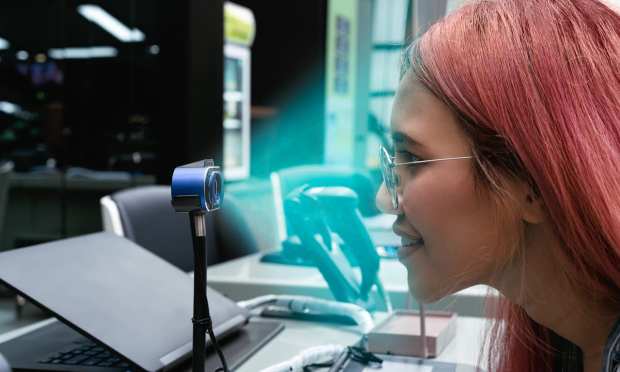Travel Business Pushes Facial ID Toward Its Close Up

Everywhere you go, there you — and your face — are.
In some regards, that’s the beauty of facial-recognition technology. Using your face to pay your bill at an L.A. restaurant, getting cash at an ATM or ride the rapid-transit line in Korea is extremely convenient. There’s no wallet or phone needed and, in the skyrocketing world of contactless payments brought about by the pandemic, there’s also no need to touch anything.
Several recent high-profile use cases show that the use of widespread facial recognition technology is more than likely a matter of not “if” but “when,” while other events seem to point in the opposite direction. For example, at Uber in the U.K., the company has been using Microsoft’s facial recognition technology (called, logically, “Face”) to verify driver identity since April 2020. The company’s Real-Time ID Check system requires drivers to occasionally send photos of themselves through the app to be compared with photos on file. It was put into place to help Uber overcome resistance in the UK based on the safety and security of its service.
The problem is that, while the intention may have been to protect its riders, the software has gotten it wrong, which has led to the revocation of several drivers’ licenses. Now, the UK’s App Drivers & Couriers Union (ADCU) and Worker Info Exchange (WIE) have asked Microsoft to suspend Uber’s use of Face and they’ve petitioned London’s mayor to review all cases of suspended licenses that came about due to Uber’s use of the service.
Face Forward
These facial recognition snafus haven’t stopped two other players from adopting or at least testing out the tech.
Just last week, the Philadelphia International Airport became the latest airport to deploy U.S. Customs and Border Protection’s (CBP) Simplified Arrival system following Las Vegas, Los Angeles, Dallas and Miami stateside, as well as Canada and some Caribbean airports. The system uses facial recognition to match a new scan of a face to an existing passport or visa database image to speed travel.
And from March 23-April 23, Disney will be testing out a facial-recognition system at its Magic Kingdom parks that “captures an image of a Guest’s face and converts it into a unique number, which is then associated with the form of admission being used for park entry,” according to a press release. While the release is scant on details it does say that the company’s reason for the test is to improve guest experience, “especially as we navigate the impact of COVID-19.”
Ultimately, using some kind of code linked to actual facial images might be key for the wider adoption of facial recognition technology. People are already comfortable storing their credit card numbers with eCommerce providers, so perhaps if facial recognition tech evolves to a point where it isn’t actually storing images, but numbers, it could help the tech do an about-face in the marketplace at large.
Facial ID has also had some legislative issues. Last month, the Virginia Legislature passed a ban prohibiting all law enforcement agencies in the state along with campus police outfits from using facial recognition tech unless the law-making body itself approves it. The ban came about because lawmakers found out that some police departments in the state were using an app created by Clearview AI to identify potential suspects in investigations. That app links to a database holding over 3 billion images lifted from social media and other websites.
“Citizens should have control of and awareness of whether or not their law enforcement officers are using this type of technology,” the bill’s lead sponsor, Democratic Del. Lashrecse Aird told the Associated Press. “The immediate baseline-level concern is that these databases have misidentified people on a large scale.”